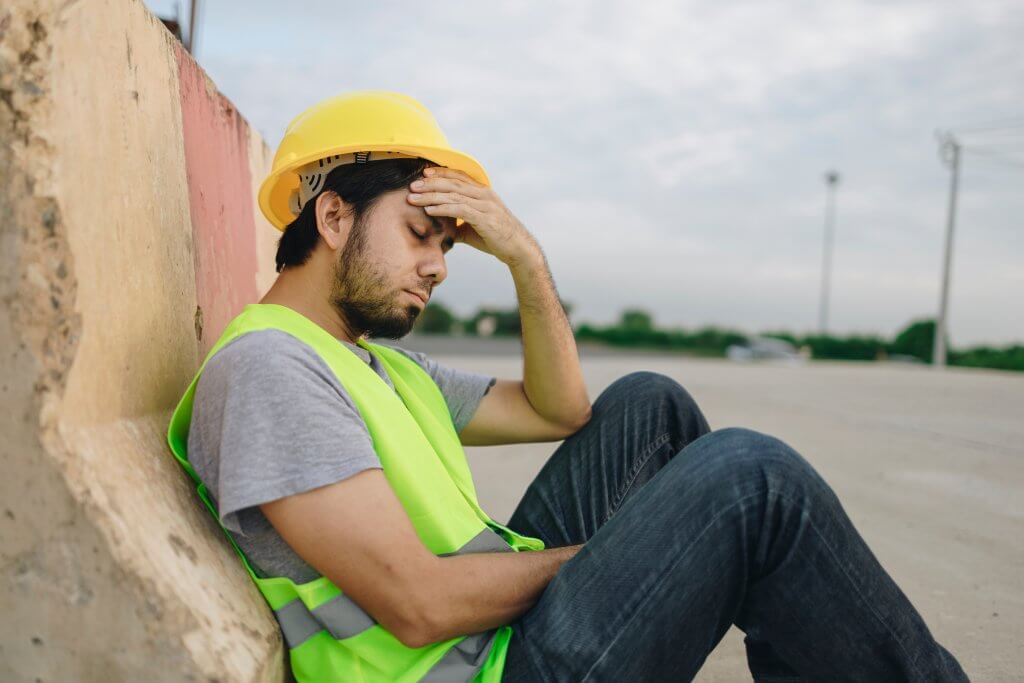May 9, 2024
A construction project requires several different pieces of machinery to complete the task. Bulldozers are needed to move earth, and nails are necessary to connect wood. Mortar is necessary to secure bricks, tar, asphalt, water, grass, and much more. Each one of these tools directly impacts the project and plays an essential role, but none come close to the most powerful tool a construction contractor has at their disposal: their mind.
Construction, while it’s an incredibly rewarding field, can also be extremely challenging from a mental standpoint. There are deadlines that teeter on the thinnest of threads, loud noises coming from every direction, and extremely long working hours on virtually every project. When you combine these realities with the constant threat of injury, it’s easy to deduce that being a construction contractor is by far one of the most stressful professions in the global economic spectrum. In fact, when it comes to the major domestic industries, construction has the 2nd highest suicide rate.
Mental health is an issue that thousands of contractors struggle with daily. The cyclical nature of the construction industry and the constant hunt for the next opportunity, the highs of winning a deal and the lows of not knowing where the next one will come from can all lead to depression, anxiety, burnout, and, as mentioned, suicide.
The first step to helping construction employees who might be dealing with mental health issues is embracing the reality that they do exist. Construction is a male-dominated industry which makes spotting the signs of mental health issues even more of a challenge. Male construction workers, the group where the majority of the issues are found, are taught to be tough, hide their emotions, and are renowned for dealing with high levels of stress.
Knowing What to Look For
When it comes to recognizing an employee who is battling mental issues, knowing the signs and signals makes all the difference. Several behaviors are considered key indicators and identifying them early, engaging that employee, and putting a plan of action in place can truly make an impact not only in the life of that person, but also in their extended network. Things to look for include:
- Declining Productivity: Declines in productivity can be the first sign that something is amiss. This is especially true if quotas are the same and have historically been met. If their work falls off dramatically, that could be an outcry that warrants a conversation.
- Worker Becomes Safety Averse: Working on a construction site brings with it a slew of inherent risks. Safety mishaps happen all the time, but if an employee begins showing signs of increasingly risky behavior, it’s probably time for some sort of intervention.
- Change in Attitude: Just like any other workplace, conflict occurs in a construction environment. But if an employee becomes more volatile than normal, isolated, or insubordinate, it could be due to increased stress or job-related anxiety. Leadership shouldn’t sweep these types of behaviors under the rug. Instead, they should be met head on and handled with the level of respect every employee deserves.
- Erratic Attendance Patterns: Another clear sign that an employee is dealing with mental health issues often shows up in their attendance. If an employee has a record of being on time, and out of nowhere begins missing days, arriving late, or lacks focus when they’re on the job, that’s a sign that they may need help.
Steps to Take
There’s a stigma surrounding the construction industry that says weakness is unwanted, unwelcome, and unnecessary. Contrary to popular belief, when a person opens up and admits they need help, that’s a sign of strength, not weakness. With that, construction leaders must lead and form an open dialogue and a safe place where employees can openly share whatever mental challenges they might be facing.
Leaders should also make sure there’s a level of trust and transparency for workers who reach out for help. Workers are fearful and, in some cases, could be worried as to how they’ll be viewed when future work opportunities are presented. By creating open lines of communication, leaders may in fact be unlocking the best version of their staff.
Finally, leaders should work tirelessly to weave mental health into their safety and training programs. If it’s part of the brand ethos, chances are workers will be more likely to tap into this valuable resource during times of need. Bodies get injured, but so do minds and it’s important to recognize this truth and begin building programs to support it.
Conclusion
Maintenance is a constant presence in construction, as workers rely heavily on all types of equipment to complete a project. Too many in leadership fail to realize that a construction worker’s mind and mental health are the most critical pieces of equipment on any job site. Moving forward, understanding, and embracing this reality will have a tremendous impact on an organization, the projects in its portfolio, and, most of all, its employees.
Save time and minimize risk with the most trusted contracts in the construction industry – powered by AIA Contract Documents’ next-generation platform, Catina. Request a Demo Here.
AIA Contract Documents has provided this article for general informational purposes only. The information provided is not legal opinion or legal advice and does not create an attorney-client relationship of any kind. This article is also not intended to provide guidance as to how project parties should interpret their specific contracts or resolve contract disputes, as those decisions will need to be made in consultation with legal counsel, insurance counsel, and other professionals, and based upon a multitude of factors.

